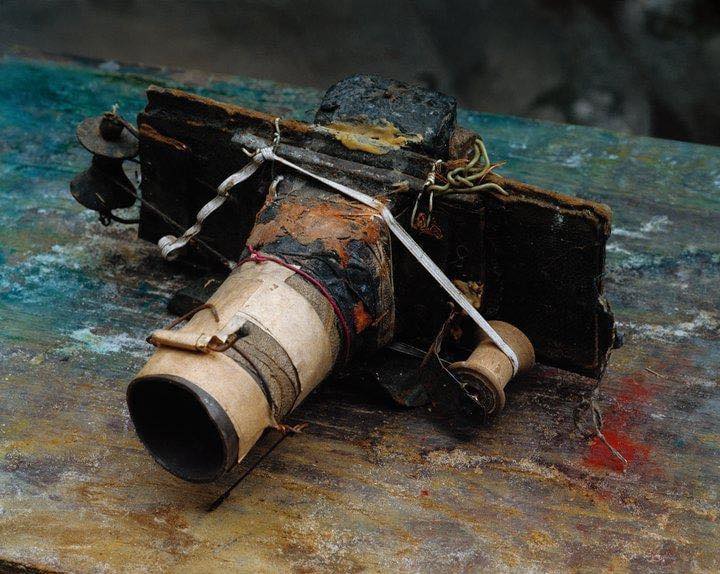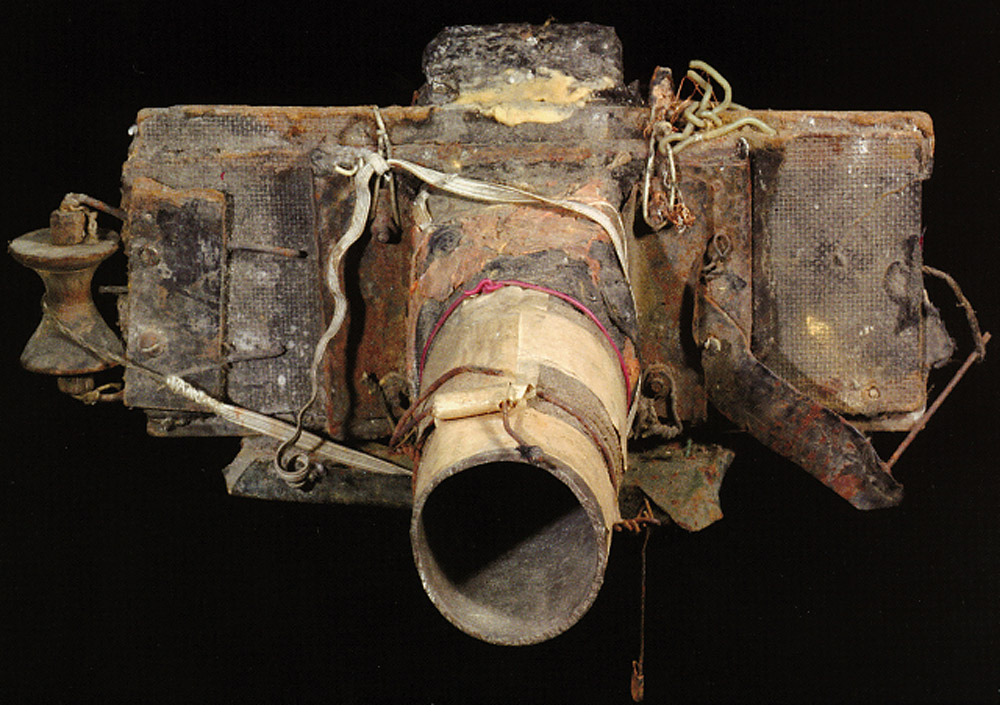Czech photographer Miroslav Tichý was a mysterious and unconventional figure in the world of photography, known for his unique approach to capturing everyday life through the lens of cameras he built himself. Born in 1926 in what was then Czechoslovakia, Tichý lived through some of the most turbulent periods of the 20th century, including the rise of communism in Eastern Europe. His work, however, was far removed from the conventional expectations of professional photography. Instead, his images—often grainy, imperfect, and dreamlike—offer a deeply personal perspective on the world around him.

What makes Tichý’s work truly remarkable is not just his subject matter, but the cameras he used to create his images. Unlike traditional photographers who relied on finely crafted equipment, Tichý built his own cameras from discarded materials—cardboard tubes, tin cans, plexiglass, and bits of string. These makeshift devices, which looked more like crude toys than professional tools, were a testament to his resourcefulness and his rejection of mainstream photographic techniques. For Tichý, photography was not about technical perfection but about capturing fleeting moments with raw authenticity.
Tichý’s photographic journey began in the 1960s, at a time when his homeland was under strict communist rule. He had initially studied painting at the Academy of Fine Arts in Prague but abandoned formal art education in favor of an unconventional and solitary life. Disillusioned by the rigid control of artistic expression under the communist regime, he withdrew from society, choosing to live in the small town of Kyjov, where he wandered the streets daily with his homemade cameras.
His primary subjects were women—often captured unaware as they walked through the town square, relaxed in parks, or lounged by the swimming pool. The resulting images were raw, soft-focused, and hauntingly beautiful. They lacked the polish of traditional portrait photography, yet they carried an intimate, almost voyeuristic quality. Some critics have debated whether his work was an act of admiration or a more problematic intrusion into private moments. Nevertheless, Tichý saw himself as an artist, documenting life as he experienced it.
Tichý’s methods were just as unorthodox as his equipment. He would often allow dust, scratches, and imperfections to become part of the final image. His prints, developed using primitive techniques in his makeshift darkroom, were never meant to be pristine. Instead, they resembled memories—faded, distorted, and imbued with a sense of nostalgia. He never sought recognition for his work and, for decades, remained largely unknown outside his small community.
For years, Tichý’s photographs were dismissed by those who saw them as crude or lacking artistic merit. His rejection of conventional photographic techniques made it difficult for him to gain acceptance in mainstream artistic circles. He lived in poverty, his work scattered across his home in piles of prints and negatives. Despite his reclusive nature, those who knew him described him as deeply committed to his craft. He believed that the flaws in his work were not imperfections but essential elements that made his images unique.
It wasn’t until the early 2000s that the art world began to take notice of Tichý’s work. In 2004, he was invited to exhibit his photographs at the Seville Biennale, an event that marked his entry into international recognition. His images, once considered strange and unpolished, were now being celebrated as raw, avant-garde expressions of an artist who defied convention. The following year, a major retrospective of his work was held at the Kunsthaus Zürich in Switzerland, further cementing his place in the world of contemporary photography.
Despite his newfound fame, Tichý remained indifferent to the art world’s validation. He refused to attend exhibitions, give interviews, or profit from his work. In many ways, he continued to live as he always had—detached from the expectations of society. He saw no need for commercial success or widespread recognition. To him, the act of photographing, of seeing and capturing the world through his handmade cameras, was more important than any accolades.
Tichý’s work is now recognized as a crucial contribution to outsider art and alternative photography. His approach challenged the traditional definitions of photographic beauty and perfection, proving that the emotional and artistic value of an image does not rely on technical precision. His ability to transform discarded objects into functioning cameras speaks to the limitless creativity of human expression. Moreover, his insistence on staying true to his artistic vision, regardless of external validation, has made him a revered figure among contemporary photographers and art enthusiasts.

Many who study Tichý’s work today are struck by its deeply personal nature. His images, though often blurry and imperfect, convey an undeniable sense of longing and nostalgia. They capture the essence of fleeting moments, the way memory distorts and reshapes reality over time. His photographs, in their rough and dreamlike quality, remind viewers that perfection is not necessary for beauty to exist.
The legacy of Miroslav Tichý is a testament to the idea that art does not need expensive tools, formal training, or mainstream approval to be meaningful. His work stands as a reminder that true creativity comes from vision and passion rather than technical mastery. In an era dominated by high-resolution digital photography and heavily edited images, Tichý’s work offers a refreshing contrast—a return to raw, unfiltered expression.
Although he passed away in 2011, Tichý’s photographs continue to captivate and inspire. His story serves as an important lesson in perseverance and artistic integrity. In a world where photography is increasingly defined by technological advancement, Tichý’s work reminds us that sometimes, the simplest tools and the purest intentions create the most profound impact. His life and work challenge us to see beauty in imperfection and to embrace the idea that art, at its core, is about perspective, not precision.
Through his unconventional methods and deeply personal vision, Miroslav Tichý transformed the ordinary into something extraordinary. His images, shaped by his handmade cameras and unique artistic philosophy, remain a striking example of how an individual’s perspective can redefine the boundaries of an art form. Today, his photographs are celebrated not for their technical mastery but for their raw authenticity and emotional depth. His work stands as a powerful reminder that art is not about following rules—it is about seeing the world through one’s own eyes and daring to capture it in a way that is entirely one’s own.





